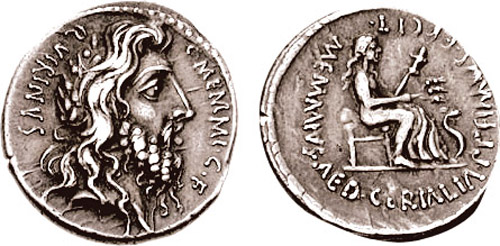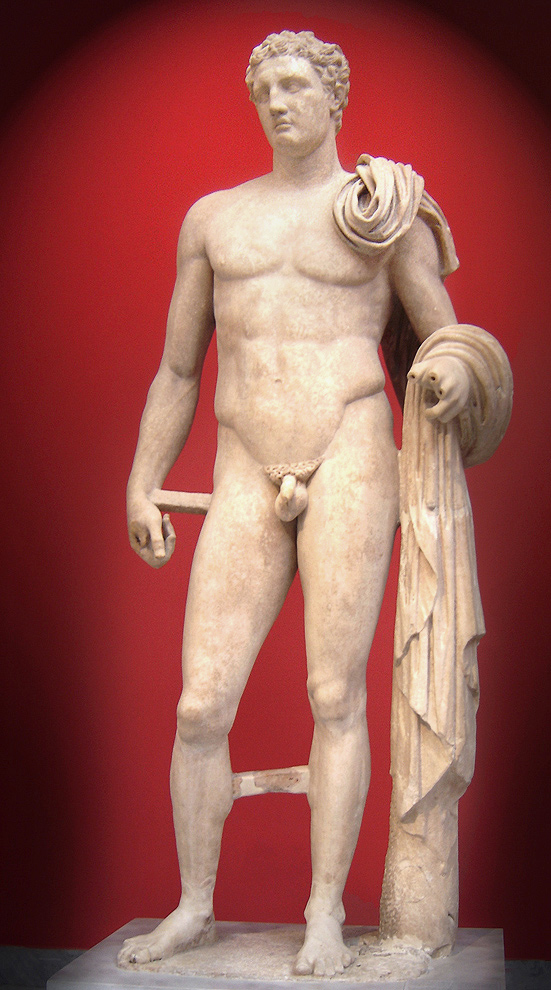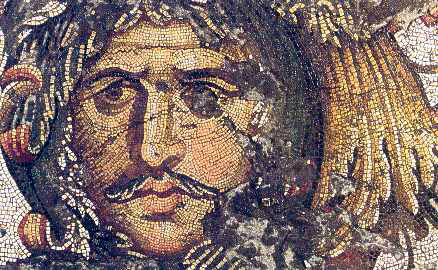|
Hippodrome Of Constantinople
Sultanahmet Square ( tr, Sultanahmet Meydanƒ±) or the Hippodrome of Constantinople ( el, бЉєѕАѕАѕМќіѕБќњќЉќњѕВ ѕДбњЖѕВ ќЪѕЙќљѕГѕДќ±ќљѕДќєќљќњѕЕѕАѕМќїќµѕЙѕВ, Hipp√≥dromos tƒУs K≈Нnstantinoup√≥le≈Нs; la, Circus Maximus Constantinopolitanus; tr, Hipodrom) is a square in Istanbul, Turkey. Previously, it was a circus that was the sporting and social centre of Constantinople, capital of the Byzantine Empire. The word ''hippodrome'' comes from the Greek ''hippos'' (), horse, and ''dromos'' (ќіѕБѕМќЉќњѕВ), path or way. For this reason, it is sometimes also called ("Horse Square") in Turkish. Horse racing and chariot racing were popular pastimes in the ancient world and hippodromes were common features of Greek cities in the Hellenistic, Roman and Byzantine eras. History and use Construction Although the Hippodrome is usually associated with Constantinople's days of glory as an imperial capital, it actually predates that era. The first Hippodrome was built when the city was ... [...More Info...] [...Related Items...] OR: [Wikipedia] [Google] [Baidu] |
Constantinople
la, Constantinopolis ota, ўВЎ≥ЎЈўЖЎЈўКўЖўКўЗ , alternate_name = Byzantion (earlier Greek name), Nova Roma ("New Rome"), Miklagard/Miklagarth (Old Norse), Tsargrad ( Slavic), Qustantiniya (Arabic), Basileuousa ("Queen of Cities"), Megalopolis ("the Great City"), ќ†ѕМќїќєѕВ ("the City"), Kostantiniyye or Konstantinopolis ( Turkish) , image = Byzantine Constantinople-en.png , alt = , caption = Map of Constantinople in the Byzantine period, corresponding to the modern-day Fatih district of Istanbul , map_type = Istanbul#Turkey Marmara#Turkey , map_alt = A map of Byzantine Istanbul. , map_size = 275 , map_caption = Constantinople was founded on the former site of the Greek colony of Byzantion, which today is known as Istanbul in Turkey. , coordinates = , location = Fatih, ƒ∞stanbul, Turkey , region = Marmara Region , type = Imperial city , part_of = , length = , width ... [...More Info...] [...Related Items...] OR: [Wikipedia] [Google] [Baidu] |
City Wall
A defensive wall is a fortification usually used to protect a city, town or other settlement from potential aggressors. The walls can range from simple palisades or earthworks to extensive military fortifications with towers, bastions and gates for access to the city. From ancient to modern times, they were used to enclose settlements. Generally, these are referred to as city walls or town walls, although there were also walls, such as the Great Wall of China, Walls of Benin, Hadrian's Wall, Anastasian Wall, and the Atlantic Wall, which extended far beyond the borders of a city and were used to enclose regions or mark territorial boundaries. In mountainous terrain, defensive walls such as ''letzis'' were used in combination with castles to seal valleys from potential attack. Beyond their defensive utility, many walls also had important symbolic functions representing the status and independence of the communities they embraced. Existing ancient walls are almost always masonry ... [...More Info...] [...Related Items...] OR: [Wikipedia] [Google] [Baidu] |
Lupa (mythology)
In the Roman foundation myth, it was a she-wolf (lupa) that nursed and sheltered the twins Romulus and Remus after they were abandoned in the wild by order of King Amulius of Alba Longa. She cared for the infants at her den, a cave known as the Lupercal, until they were discovered by a shepherd, Faustulus. Romulus would later become the founder and first king of Rome. The image of the she-wolf suckling the twins has been a symbol of Rome since ancient times and is one of the most recognizable icons of ancient mythology. Origins There is evidence that the wolf held a special place in the world of the ancient peoples of Italy. One legend claims that the Hirpini people were so-called because, when they set out to find their first colony, they were led to its location by a wolf (from the Osco-Umbrian word for wolf: ''hirpus''). The tale of the Lupercal is central to that of the twins, and probably predates theirs. To the Roman god Mars, the wolf is a sacred animal. There is an ... [...More Info...] [...Related Items...] OR: [Wikipedia] [Google] [Baidu] |
Romulus
Romulus () was the legendary foundation of Rome, founder and King of Rome, first king of Ancient Rome, Rome. Various traditions attribute the establishment of many of Rome's oldest legal, political, religious, and social institutions to Romulus and his contemporaries. Although many of these traditions incorporate elements of folklore, and it is not clear to what extent a historical figure underlies the mythical Romulus, the events and institutions ascribed to him were central to the myths surrounding Rome's origins and cultural traditions. Traditional account The myths concerning Romulus involve several distinct episodes and figures, including the miraculous birth and youth of Romulus and his twin brother, Remus; Remus' murder and the founding of Rome; the Rape of the Sabine Women, and the subsequent war with the Sabines; a period of joint rule with Titus Tatius; the establishment of various Roman institutions; the death or apotheosis of Romulus, and the succession of Numa Pompil ... [...More Info...] [...Related Items...] OR: [Wikipedia] [Google] [Baidu] |
Lysippos
Lysippos (; grc-gre, ќЫѕНѕГќєѕАѕАќњѕВ) was a Ancient Greek sculpture, Greek sculptor of the 4th century BC. Together with Scopas and Praxiteles, he is considered one of the three greatest sculptors of the Ancient Greece, Classical Greek era, bringing transition into the Hellenistic period. Problems confront the study of Lysippos because of the difficulty of identifying his style among the copies which survive. Not only did he have a large workshop and many disciples in his immediate circle, but there is understood to have been a market for replicas of his work, supplied from outside his circle, both in his lifetime and later in the Hellenistic art, Hellenistic and Roman sculpture, Roman periods. The ''Victorious Youth'' or Getty bronze, which resurfaced around 1972, has been associated with him. Biography Born at Sicyon around 390 BC, Lysippos was a worker in bronze in his youth. He taught himself the art of sculpture, later becoming head of the school of Ancient Argos, Argos a ... [...More Info...] [...Related Items...] OR: [Wikipedia] [Google] [Baidu] |
Heracles
Heracles ( ; grc-gre, бЉ©ѕБќ±ќЇќїбњЖѕВ, , glory/fame of Hera), born Alcaeus (, ''Alkaios'') or Alcides (, ''AlkeidƒУs''), was a divine hero in Greek mythology, the son of Zeus and Alcmene, and the foster son of Amphitryon.By his adoptive descent through Amphitryon, Heracles receives the epithet Alcides, as "of the line of Alcaeus", father of Amphitryon. Amphitryon's own, mortal son was Iphicles. He was a great-grandson and half-brother (as they are both sired by the god Zeus) of Perseus, and similarly a half-brother of Dionysus. He was the greatest of the Greek heroes, the ancestor of royal clans who claimed to be Heracleidae (), and a champion of the Olympian order against chthonic monsters. In Rome and the modern West, he is known as Hercules, with whom the later Roman emperors, in particular Commodus and Maximian, often identified themselves. The Romans adopted the Greek version of his life and works essentially unchanged, but added anecdotal detail of their own, so ... [...More Info...] [...Related Items...] OR: [Wikipedia] [Google] [Baidu] |
Hipodrom
Hipodrom is a residential district located in the southern part of Sibiu, Romania. It is one of the most densely populated districts of the city, housing one third of the population. The district is separated into four smaller districts (Hipodrom I, II, III and IV) although in official records it is considered as a whole. The name comes from the former hippodrome that was located in the region which was demolished by the Nicolae Ceau»Щescu Nicolae Ceau»Щescu ( , ; вАУ 25 December 1989) was a Romanian communist politician and dictator. He was the general secretary of the Romanian Communist Party from 1965 to 1989, and the second and last Communist leader of Romania. He was ... regime to make space for apartment buildings. {{coord missing, Sibiu County Districts of Sibiu ... [...More Info...] [...Related Items...] OR: [Wikipedia] [Google] [Baidu] |
Great Palace Of Constantinople
The Great Palace of Constantinople ( el, ќЬќ≠ќ≥ќ± ќ†ќ±ќїќђѕДќєќњќљ, ''M√©ga Pal√°tion''; Latin: ''Palatium Magnum''), also known as the Sacred Palace ( el, бЉєќµѕБбљЄќљ ќ†ќ±ќїќђѕДќєќњќљ, ''Hier√≤n Pal√°tion''; Latin: ''Sacrum Palatium''), was the large imperial Byzantine palace complex located in the south-eastern end of the peninsula now known as Old Istanbul (formerly Constantinople), in modern Turkey. It served as the main imperial residence of the Eastern Roman or Byzantine emperors until 1081 and was the centre of imperial administration for over 690 years. Only a few remnants and fragments of its foundations have survived into the present day. History When Constantine I refounded Byzantium as Constantinople in 330, he planned out a palace for himself. The palace was located between the Hippodrome and Hagia Sophia. The complex of palaces was rebuilt and expanded several times during its history. Much of the complex was destroyed during the Nika riots of 532 and was rebuil ... [...More Info...] [...Related Items...] OR: [Wikipedia] [Google] [Baidu] |
Kathisma
A kathisma (Greek: ќЇќђќЄќєѕГќЉќ±; Slavonic: –Ї–∞—≥–Є—Б–Љ–∞, ''kai-isma''), literally, "seat", is a division of the Psalter, used in the Eastern Orthodox and Byzantine Rite Catholic churches. The word may also describe a hymn sung at Matins, a seat used in monastic churches, or a type of monastic establishment. Psalms According to ancient practice, monastics recite all 150 psalms on a regular basis. Originally, the hermits in the desert would recite the entire Psalter every day. With the spread of cenobitic monasticism, the practice began of chanting the Canonical Hours in common, and the Psalter thus became the foundation of the Daily Office, augmented by numerous hymns, prayers and scriptural readings. The custom grew of reciting all 150 psalms each week during the course of the services. To facilitate this, the 150 psalms were divided into 20 sections, called ''kathismata'' ( el, ќЇќ±ќЄќѓѕГќЉќ±ѕДќ±; chu, –Ї–∞—≥–Є—Б–Љ—Л, . Meaning literally, "sittings". The name is derived fr ... [...More Info...] [...Related Items...] OR: [Wikipedia] [Google] [Baidu] |
Stadium Seating
Stadium seating or theater seating is a characteristic seating arrangement that is most commonly associated with Performing arts, performing-arts venues, and derives its name from stadiums, which typically use this arrangement. Description In stadium seating, most or all seats are placed higher than the seats immediately in front of them so that the occupants of further-back seats have less of their views blocked by those further forward. This is especially necessary in stadiums where the subject matter is typically best observed from above, rather than in-line or from below. In addition to sports venues and performing arts venues, many other venues that require clear audience views of a single area use stadium seating, including religious institutions, lecture halls, and movie theaters. Alternatives An alternative to stadium seating is to place the focal area at a higher level than the audience, so that the audience may look above those people in front of them to see, (like the ... [...More Info...] [...Related Items...] OR: [Wikipedia] [Google] [Baidu] |
Carceres
The Roman circus (from the Latin word that means "circle") was a large open-air venue used for public events in the ancient Roman Empire. The circuses were similar to the ancient Greek hippodromes, although circuses served varying purposes and differed in design and construction. Along with theatres, amphitheatres, and the similar but much smaller stadiums, circuses were one of the main entertainment sites of the time. Circuses were venues for chariot races, horse races, gladiatorial combat, and performances that commemorated important events of the Empire were performed there. According to Edward Gibbon, in Chapter XXXI of his work ''The History of the Decline and Fall of the Roman Empire'', the Roman people, at the start of the 5th century: Architectural design The performance space of the Roman circus was normally, despite its name, an oblong rectangle of two linear sections of race track, separated by a median strip running along the length of about two thirds the track, jo ... [...More Info...] [...Related Items...] OR: [Wikipedia] [Google] [Baidu] |







